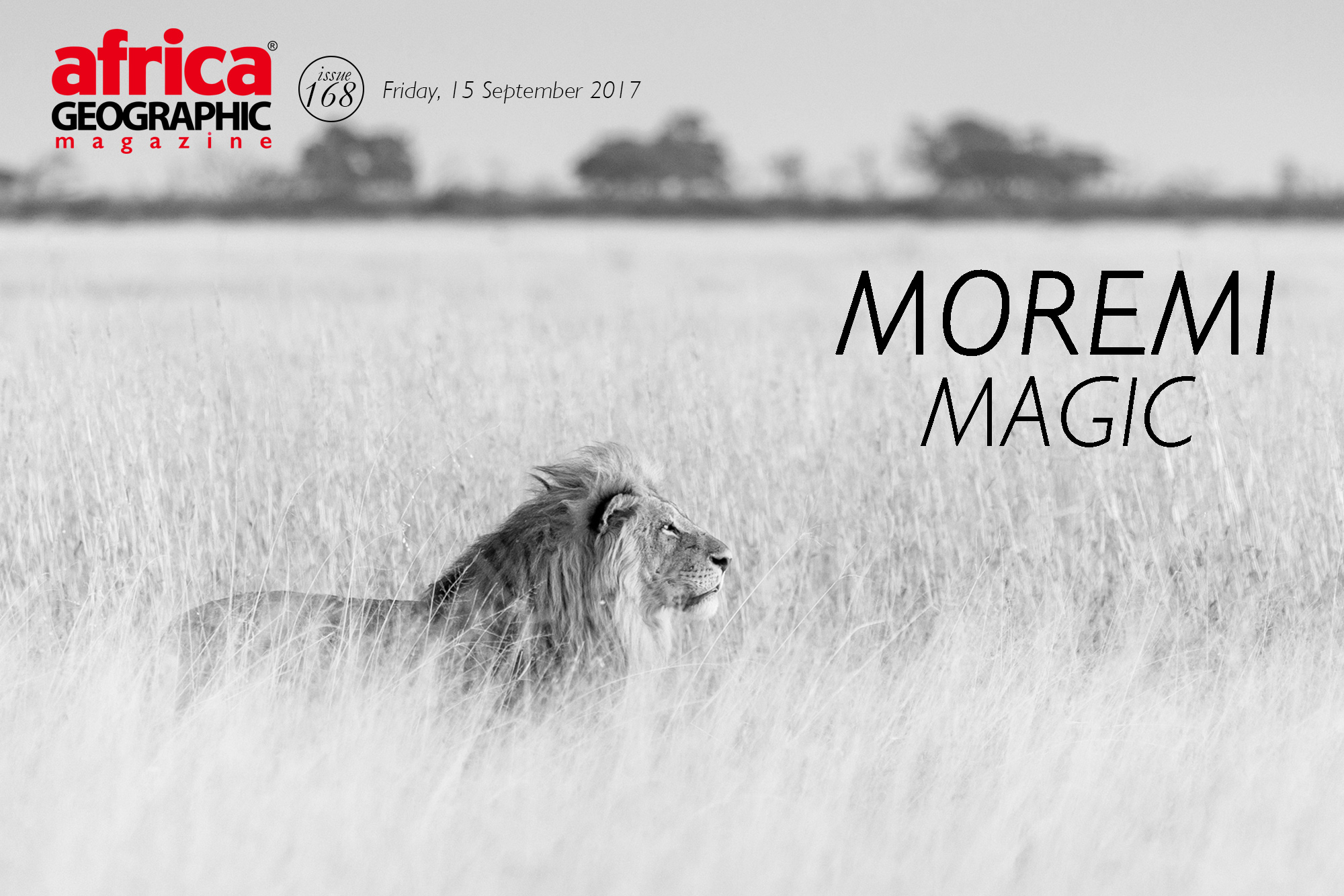
Mobile safari meanderings in Botswana


What I miss most about fly-in safaris is the satisfaction of having journeyed. After all, the Swahili word ‘safari’ is derived from ‘safar’, the Arabic word for journey.
Don’t get me wrong. For time-strapped holidaymakers, flying to your lodge saves time and offers a different perspective of the bushveld. But, there’s something immensely satisfying about loading up your kit and navigating bush tracks to reach your destination.
Although most of us don’t have the equipment or experience to do this ourselves, fear not. In Botswana, you can still experience a mobile safari while others do the hard work.

In May this year, I joined a mobile safari through the Moremi Game Reserve in Botswana. You can book an entire mobile expedition for your family and friends, but, as a single traveller (my wife was holding the fort at home), I latched onto an existing expedition.
My travel companions were a German fellow (also sans his wife) and a wonderful family of five from the Dominican Republic on their annual holiday. Each year, this spirited family journeys in the real sense. They pick a destination and experience it in as granular a way as possible. They’d already slept under Namibian desert stars on this safari and driven themselves through Namibia to Botswana.
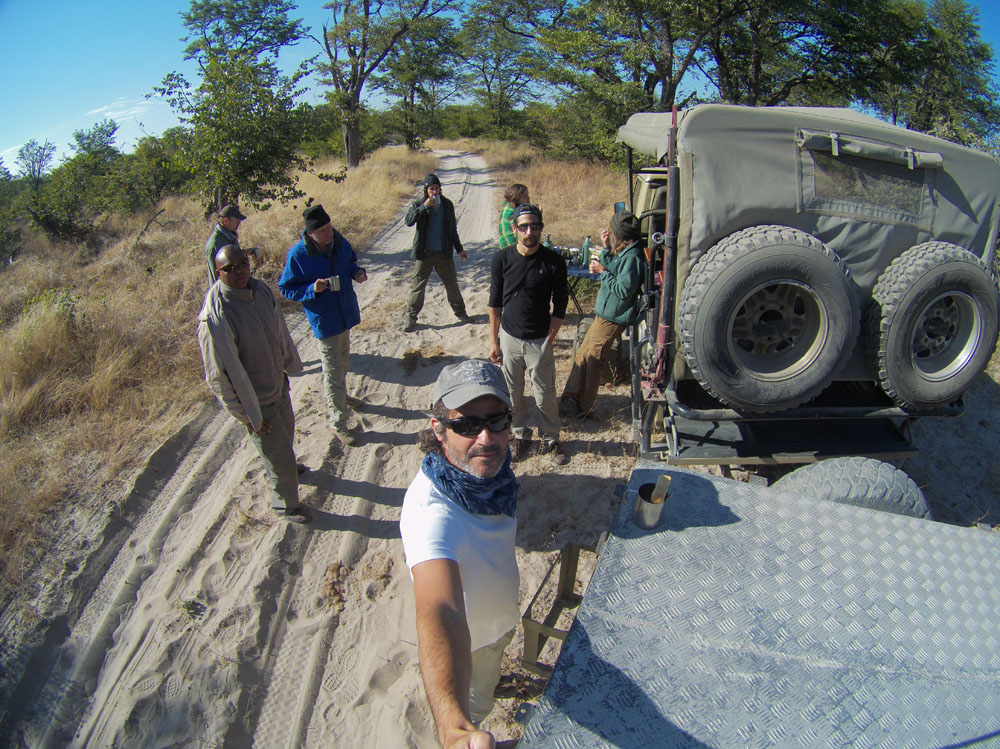
They were now on a mobile safari from Maun to Kasane, travelling through the wildlife gems of Moremi, Khwai, Savute and Chobe. I journeyed with them until Khwai, where I hopped off to spend time at a few lodges before flying back to Cape Town from Maun.
Camps that leave no trace
Let’s talk about accommodation because many people use that filter to help them decide on their next safari.
The hard-working backup crew drove ahead of us to set up camp and prepare meals. It was a fantastic feeling to arrive at a new campsite after a morning of game viewing to find our home all built and snugly ready for us.
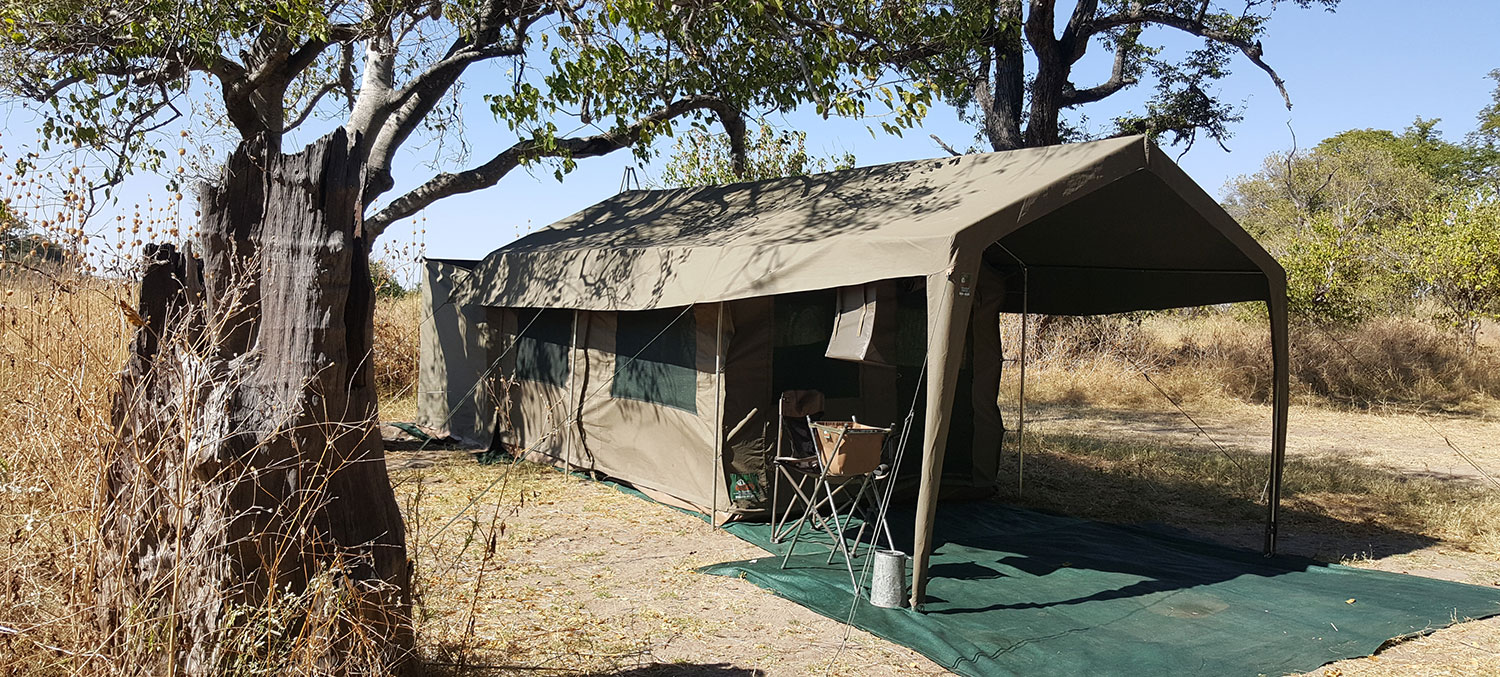
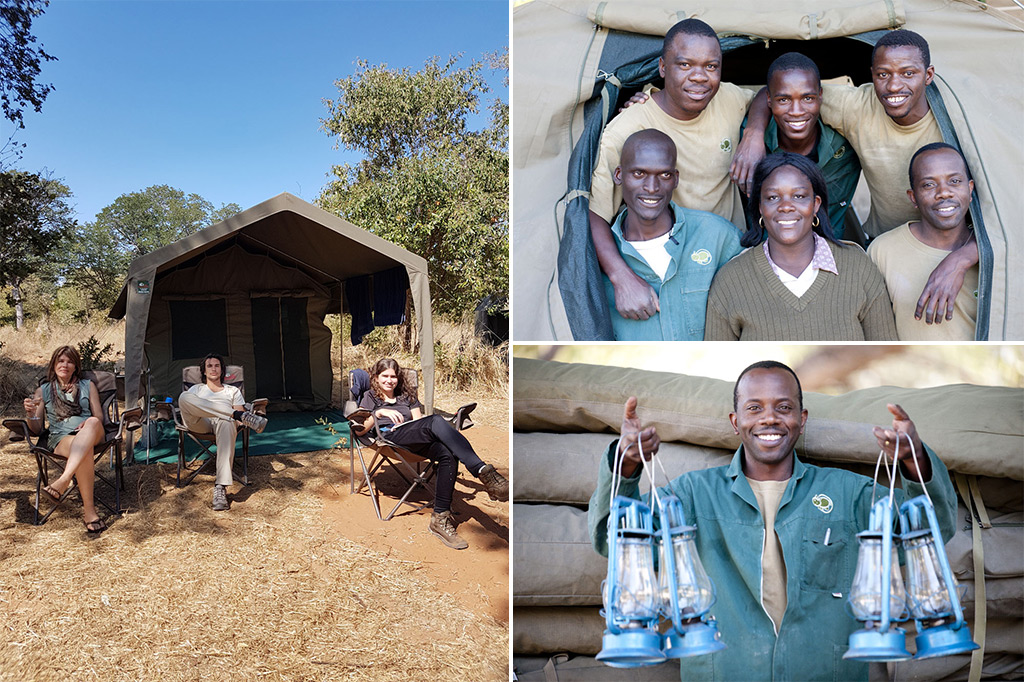
Each campsite we used was exclusively ours for that period, so there was a sense of absolute privacy that added to the appeal. You can choose between large, luxury Meru-style tents, which I enjoyed, or smaller dome-style tents, which my colleague Christian Boix thoroughly enjoyed earlier this year when he booked a mobile safari for his family.
Pictures do a better job of describing the campsite than I can. But, I will say that having stayed at many lodges of all luxury levels in my 25 years in this business, these Meru-styled mobile camps do it for me.
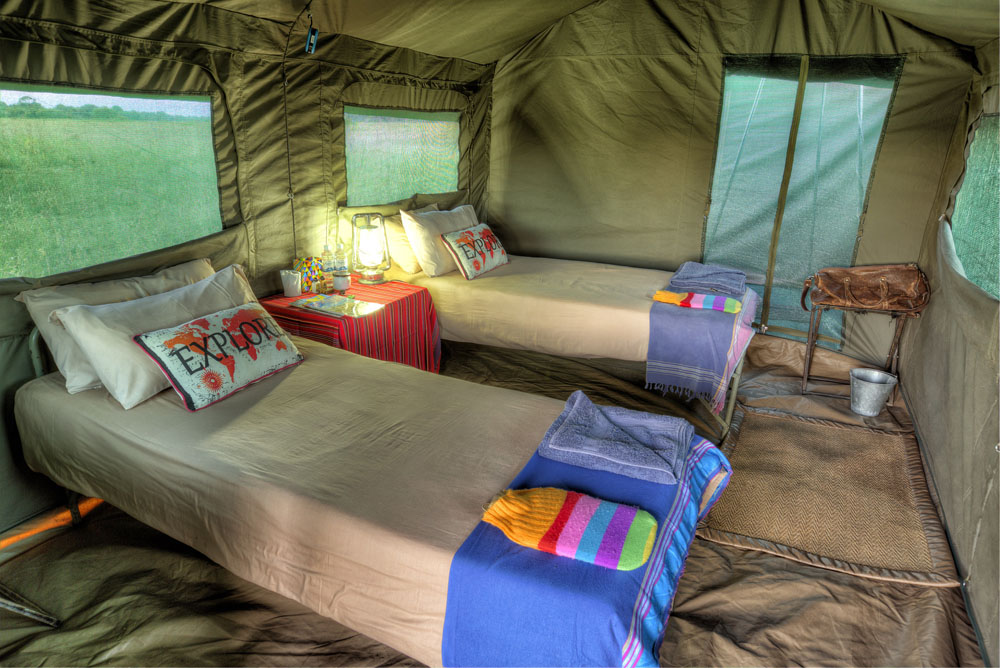
Each tent has an en-suite bathroom with a bucket shower – a large canvas bag filled with water heated over a wood fire. There’s also a bush toilet: a deep hole dug in the ground, covered by a throne to remind you of home.
Once the crew dismantles your campsite, all that remains are footprints. The loo pits are filled in, and your contribution to local biodiversity is soon composted.
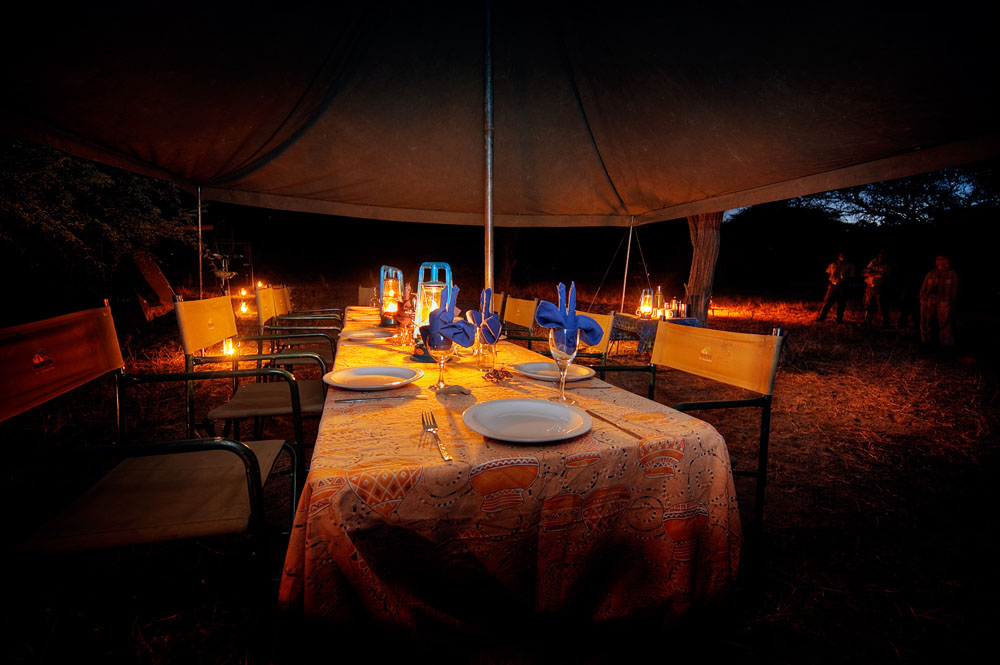
A potent digital detox
Perhaps you’re wondering about internet access? Well, once you’re clear of Maun and Kasane, there is none. This is an opportunity to detox from that incessant social media chatter. Instead, you’ll have time to tune into bush chatter: tree squirrel alarm calls, distant leopard grunts, and the perpetual burbling backing track of insects and birds.

There’s a rhythm to this mobile safari that encourages you to truly, seriously unwind. On a ten-day safari, you’ll typically be based in three or four areas for a few days each, with travel days in-between.
And, aside from the first day’s drive from Maun to Moremi, even travel days are just an extended game drive, ending at a new campsite in the early or mid-afternoon after a bush lunch along the way.
Time takes on a different meaning on a mobile safari, perhaps because you have more of it. Our guide Sam was extremely relaxed. He knew that with the ten full days at his disposal, and the wide range of habitats we’d journey through, he’d be able to show his guests all the most sought-after species, including lions, leopards and wild dogs.
And, he was right. Compare that to the unfortunate fly-in safari guides who have only a few hours a day and perhaps three days in total to deliver on a long laundry list of expectations.
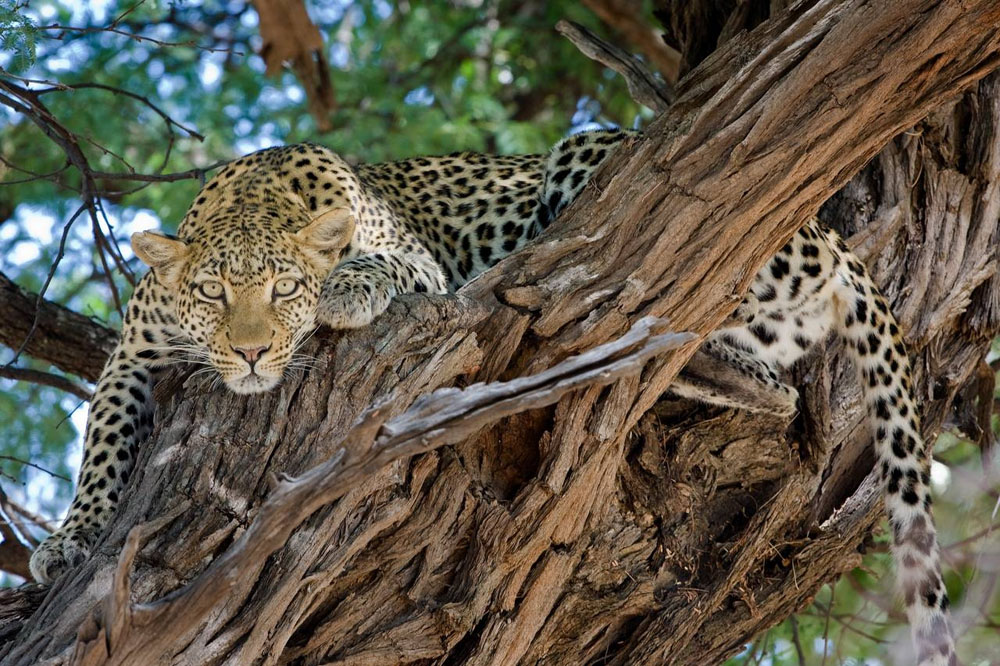
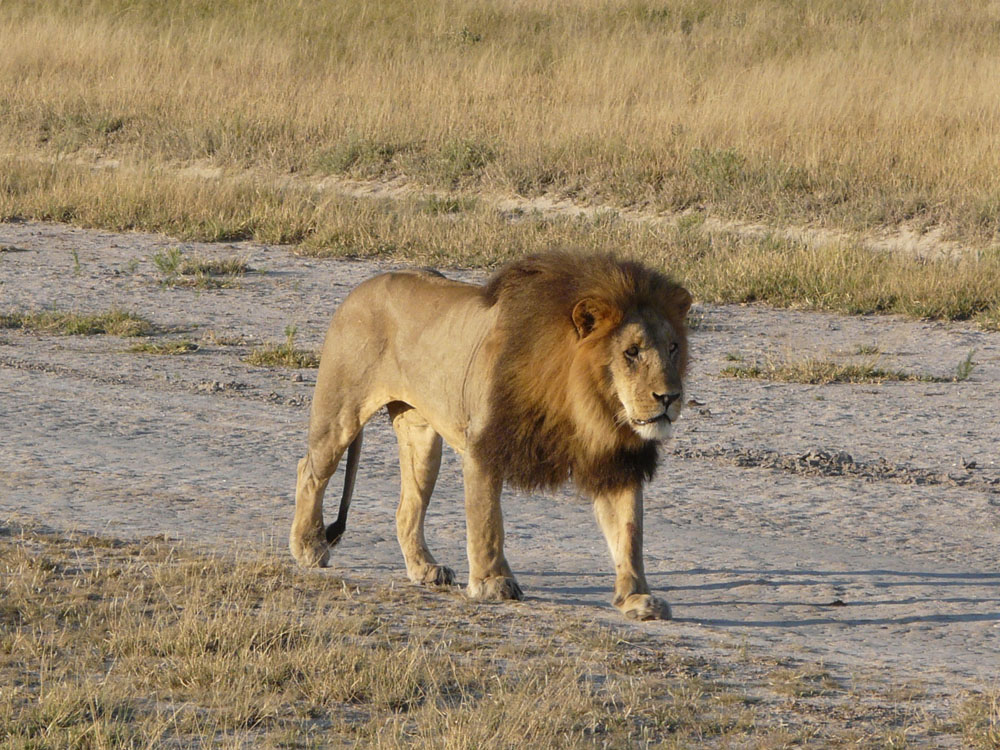
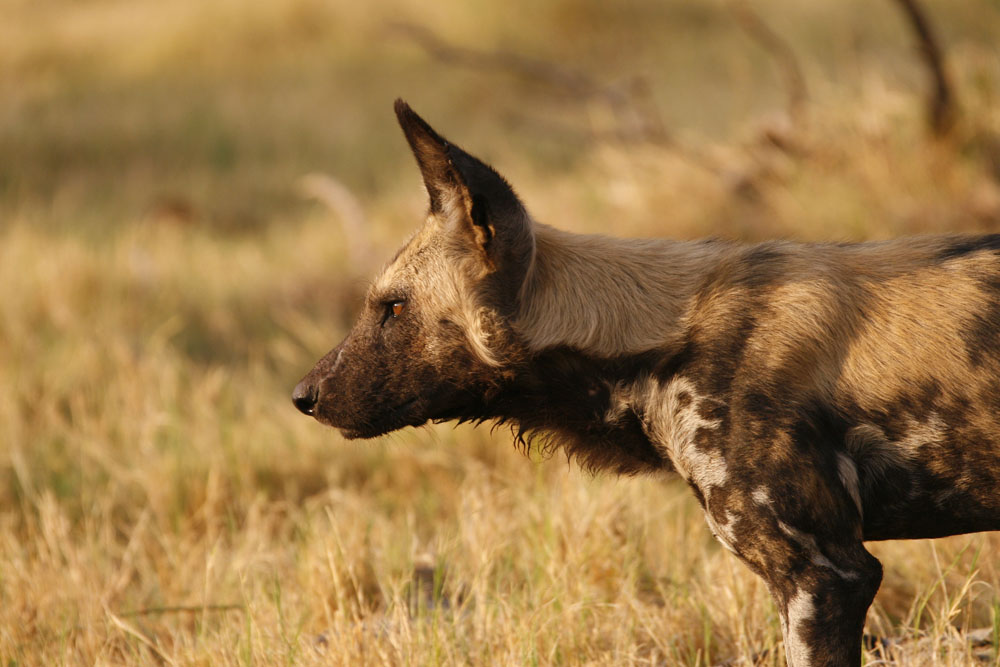
The slow safari schedule
Each day, you leave camp first thing in the morning after coffee and a light breakfast to catch the early morning ‘newspaper’ – tracks and other signs left by wildlife. After some fantastic wildlife encounters and a stop for coffee and biscuits (ask for Amarula in your coffee – yum!) you meander back to camp by late morning for brunch. This is followed by downtime and a siesta.
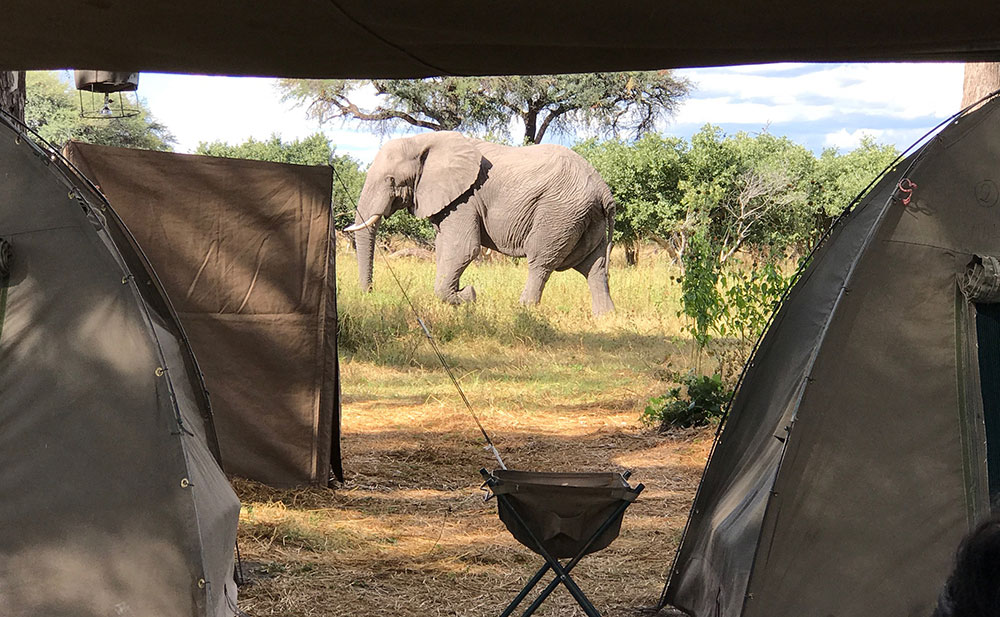
Late afternoon brings tea and cake before you head out for another game drive. There’ll be sundowner drinks and snacks somewhere out there. Shortly after dark, you’re back in camp for campfire stories accompanied by your favourite tipple (or two) and a delicious dinner cooked over the fire by talented bush chefs.
With heavy eyes and a full tummy, you stagger to bed. Your lullabies are sung by hyenas, lions, leopards, hippos, nightjars, and several species of owls.
Yes, you may just pick up a pound or two because you’ll be pampered, bush-style, from dawn to dusk. But, you’ll also recharge your batteries and reconnect with the real you. Safari njema!
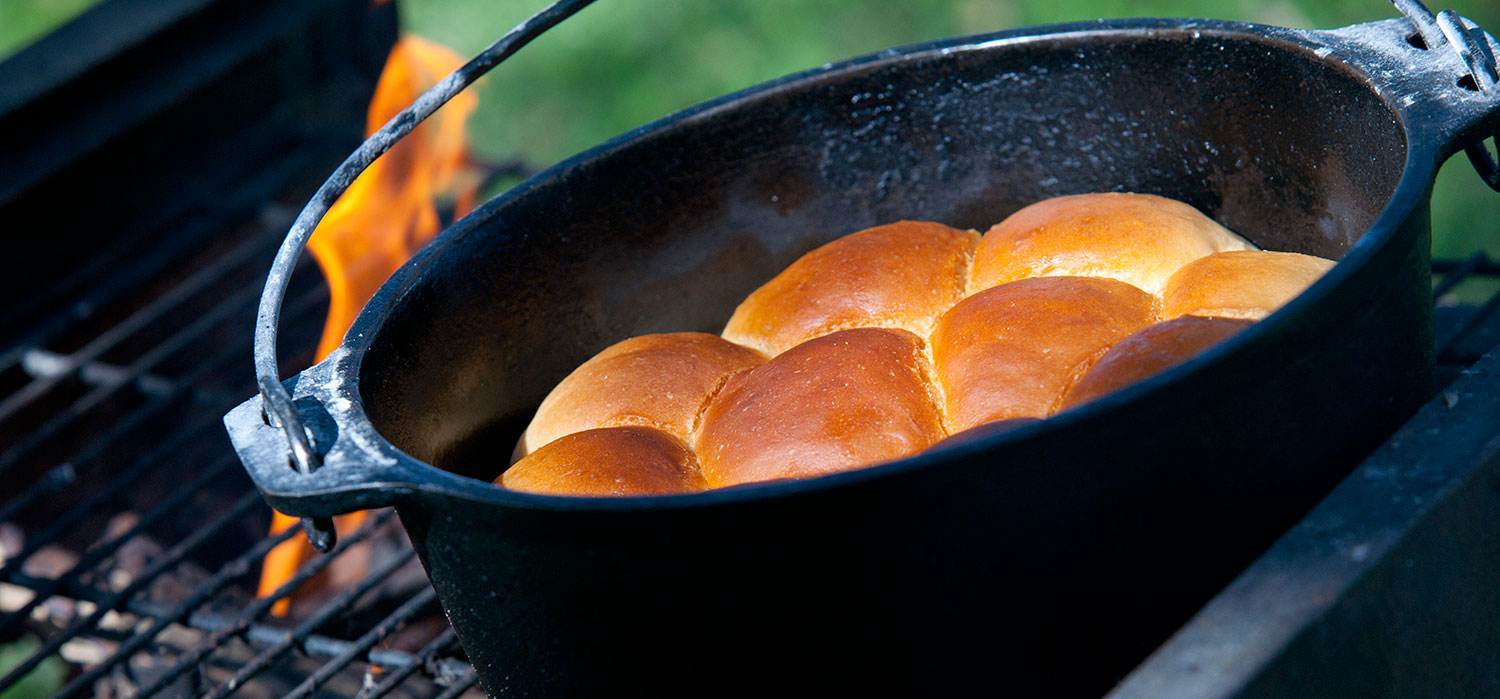

Moremi Game Reserve
Moremi makes up about 26 percent of the renowned Okavango Delta. It’s largely dedicated to self-drive tourists and mobile safari operators. It was the first reserve in Africa to be established by local residents.
The Batawana people of Ngamiland were concerned by the rapid depletion of wildlife due to uncontrolled hunting and cattle encroachment. In 1963, under the leadership of the late Chief Moremi III’s wife, they took the bold initiative to proclaim Moremi a game reserve.
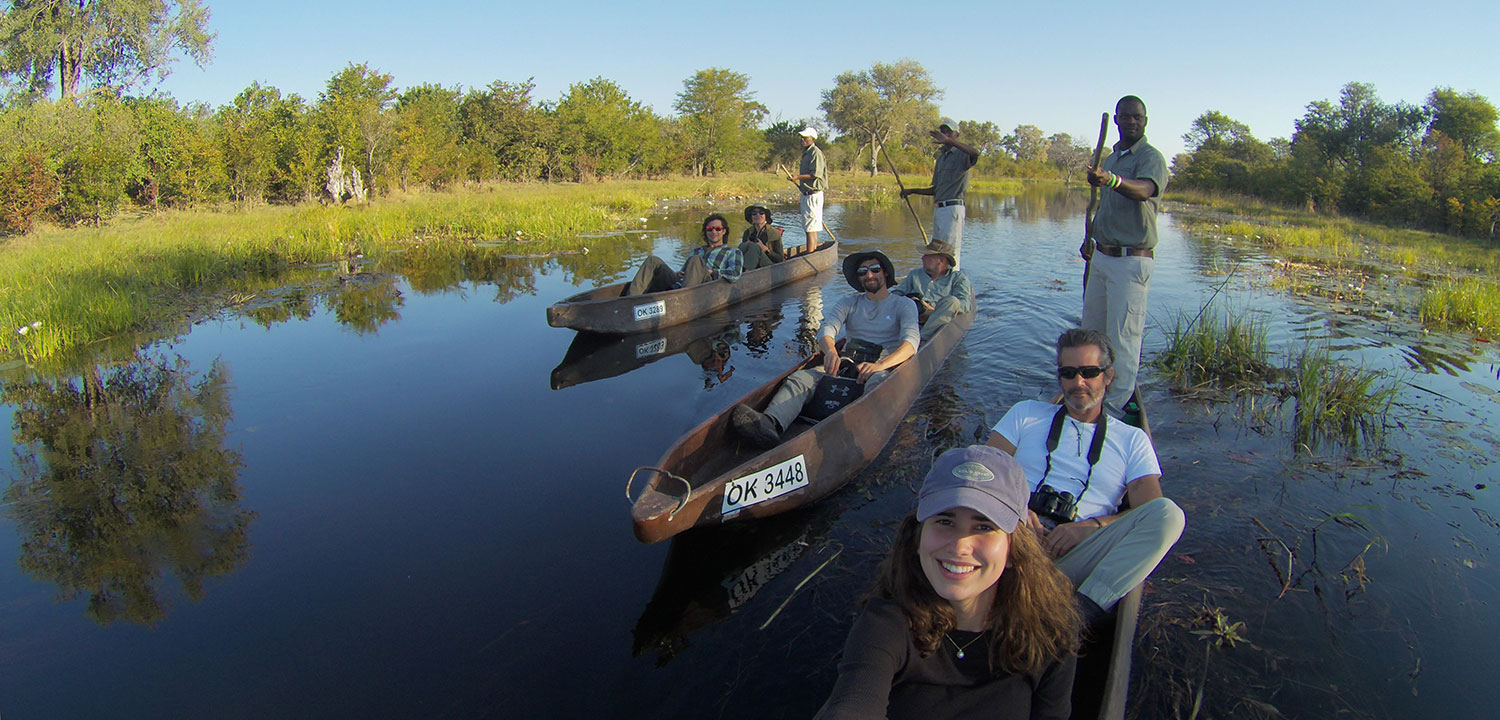
The Okavango Delta comprises more than 15,000 km² of watery paradise. It’s a lush wilderness of papyrus, impenetrable reed beds, grassy floodplains, and tree-covered islands.
The complex water channel network of varying depths is engineered and maintained by hippos and elephants. Some areas are permanently underwater. Others are submerged only when the annual floodwaters arrive from Angola.
This constant ebb and flow of water creates one of the most fascinating and diverse ecosystems on the planet. Unsurprisingly, the Okavango Delta is both a RAMSAR Site and UNESCO World Heritage Site.
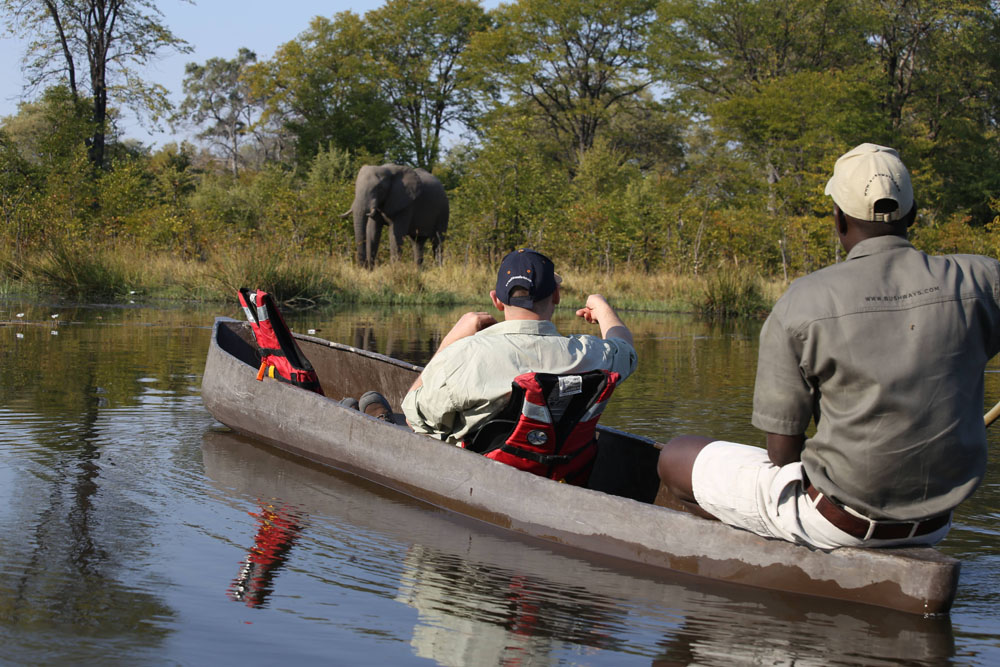
The Okavango Delta is not a national park, so there are fewer restrictions on activities. Off-road driving when following wildlife is allowed, as are night drives and walking safaris. Unlike the national parks, the Okavango is largely unavailable to self-drive tourists (except for the Moremi section), so your safari is likely to be private and exclusive.
A bucket list activity unique to this area is gliding down the myriad of waterways on a mokoro (a traditional dugout canoe).
Your poler guide will expertly slide the mokoro along channels surrounded by tall papyrus and reeds, giving you a unique perspective and fantastic photographic opportunities as you silently sneak up on birds, frogs, otters and possibly even larger animals such as hippos, crocodiles and elephants. A lucky few will see the elusive and wary sitatunga antelope.

Wildlife includes the Big 5 (lion, leopard, elephant, buffalo and rhino), many antelope species, zebras, giraffes, hippos, and crocodiles. There are good populations of cheetahs, hyenas and wild dogs, as well as a plethora of smaller species such as serval, aardwolf, pangolin, aardvark and bat-eared fox. You will see more wildlife in areas that are not permanently flooded.
Birdwatching can be spectacular. There are over 400 species including avian jewels such as Pel’s fishing owl, slaty egret, pygmy goose, crowned and wattled cranes, western banded snake-eagle, coppery-tailed coucal and colonies of incandescent carmine bee-eaters.
For accommodation options at the best prices visit our collection of camps and lodges: private travel & conservation club. If you are not yet a member, see how to JOIN below this story.
 WATCH: EXPLAINER: A MOBILE SAFARI IN BOTSWANA (0:56)
WATCH: EXPLAINER: A MOBILE SAFARI IN BOTSWANA (0:56)
ABOUT THE AUTHOR
 Simon Espley is an African of the digital tribe, a chartered accountant and CEO of Africa Geographic. His travels in Africa are in search of wilderness, real people with interesting stories and elusive birds. He lives in Hoedspruit with his wife Lizz and 2 Jack Russells, and when not travelling or working, he will be on his mountain bike somewhere out there. His motto is ‘Live for now, have fun, be good, tread lightly and respect others. And embrace change.’
Simon Espley is an African of the digital tribe, a chartered accountant and CEO of Africa Geographic. His travels in Africa are in search of wilderness, real people with interesting stories and elusive birds. He lives in Hoedspruit with his wife Lizz and 2 Jack Russells, and when not travelling or working, he will be on his mountain bike somewhere out there. His motto is ‘Live for now, have fun, be good, tread lightly and respect others. And embrace change.’
To comment on this story: Login (or sign up) to our app here - it's a troll-free safe place 🙂.![]()






